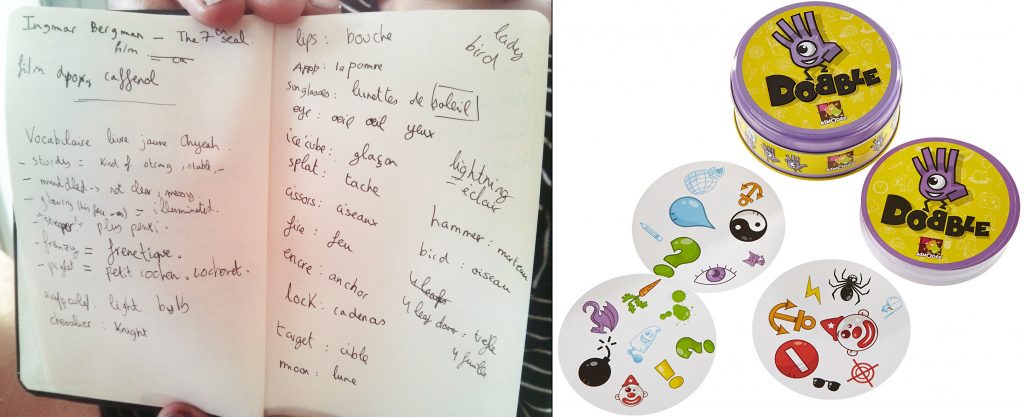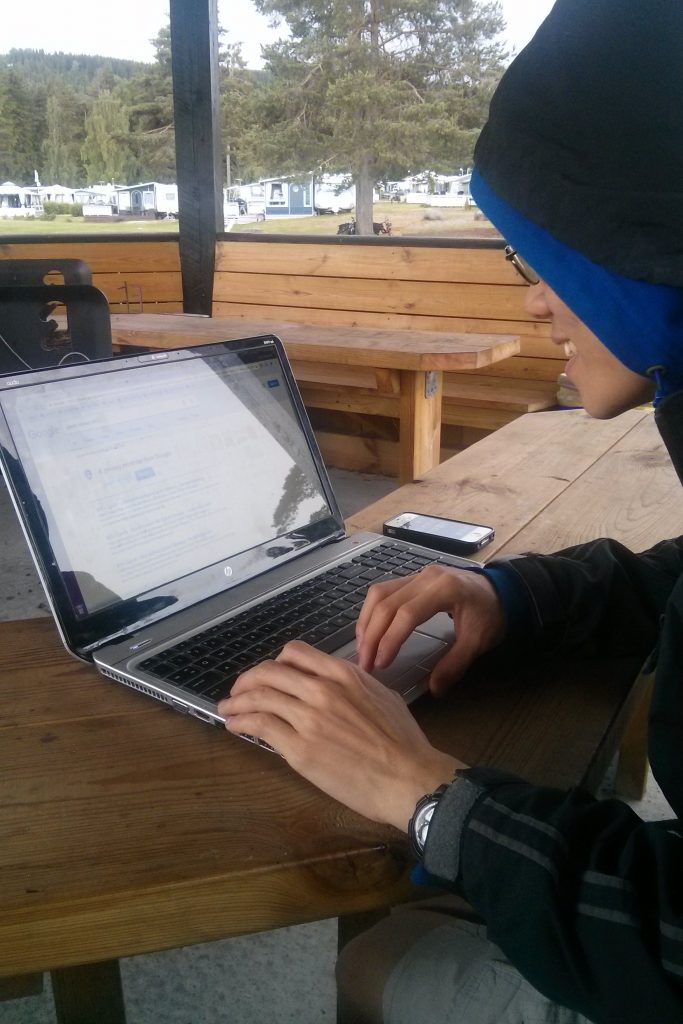WWOOFing in Norway (from a non-random sample of 2)
Before I do a deep dive into specific incidents, stories, and my thoughts thereof… I convinced myself that I should do a general overview to give more context to the stuff that is (in my honest opinion) more fun to write later.
There are three core elements to WWOOFing:
- World-Wide: being in a particular place in the world.
- Opportunities for cultural exchange.
- Organic Farms: participating in manual labour on a farm!
I will say a couple words about each of these.
Geography
We ultimately worked for two Norwegian host families, one permaculture establishment in (1) Gjøvik for one month and a permaculture garden in (2) Tønsberg for two weeks. I will have a separate post about this, but for now it will suffice–for those unfamiliar–to know that permaculture, as a farming philosophy, is a subset of organic farming.

Gjøvik and Tønsberg in the context of Norway in general
Although Norway is a very skinny “North-South” kind of country, the people seem to distinguish themselves in terms of “East” and “West”. The “Mouantains”, the Scandes, are the mountain range that form the famous Norwegian fjords and are the natural division between “The West” and “The East”. My impression is that the East (ie. Gjøvik, Oslo, Tønsberg) is characterized by milder and more predictable weather where as the West is far more volatile and violent; apparently in Bergen, it rained for over 20 days in June. Both sets of host always talked about “The West”, and often went on excursions to “the Mountains” that involved extreme sports and cabins with no heating.
We also came across a lot of travelers who were Norwegians visiting the East from “The West”. People from the West have summer homes and spaces in trailer parks in the East to enjoy milder weather. Since we were confined to the East during our stay, we were always very curious about the West…

The farm near Gjøvik overlooks Norway’s largest lake, Mjøsa.

Clusters of islands in the fjords near Tønsberg
Manual Labour on Organic Farms
Of course, the work was the reason we wanted to WWOOF and work we did. On Gjøvik, we were mostly doing “unskilled” manual labour whereas in Tønsberg we had the opportunity to work on tasks that require more fine motor skills. I will elaborate on the work we did in gory detail accompanied by not-as-gory images in later posts.
There’s something about manual labour that is so satisfying. (At least, for the 1.5 months that I did it. Whether I would feel that same after 6 months is still to be determined!)
Psychological benefits
I love how tangible the progress was. The kind of work where working hard has a direct correlation to how much gets done is kind of refreshing compared to, say, science where I can (and have) toiled for weeks on an experiment before realizing I went in the wrong direction.
At the same time, even with this “unskilled” labour, you can’t be completely vapid. You can only reap the benefit of “hard work directly correlates to progress” AFTER you’ve used your brains to optimize how you do a repetitive task.

For repetitive manual labour, how long you’ve worked (given a constant weather and constant physical effort) directly relates to how much of the task you complete. However, how well you optimize the task dictates the rate at which you finish the task.
Despite the monotony of a lot of the tasks, “farming” is actually very mentally stimulating.
For one, a repetitive task is the perfect condition to listen to podcasts. But even in silence manual labour feels mentally productive.
Have you ever noticed how many poems, phrases, proverbs, parables are farming references?? Silence gave me the opportunity to form visceral associations with ideas that I only had an intellectual relationships with prior.
Finally, there is a certain novelty about “working the land”. But maybe it’s only we city folk who have an idealization of agrarian societies ….that I’m sure would make real farmers’ eyes roll…
Physiological benefits?
As a sufferer of eczema, my skin has never been better than while farming in Norway. I guess there’s a difference between being dirty and being polluted.
Not sure if this count as a physiological response to physical labour, but I’ll have you know that I had vivid dreams practically every other night in Norway. This is coming from someone who, until now, only remembers dreaming maybe twice a year (… and only when I do, it’s because the dream was traumatizing enough to leave an impression upon waking).
Another benefit is that, all of a sudden, meals are really rewarding. In Canada, too often it’s our our stomach capacity not our money that limits the amount of good food we can have (talk about first world problems!) Here, we worked up really huge appetites, which is good because there was an abundance* of delicious food I could experiment with! (*both farms had their own ways of procuring food that is destined to be thrown away for free!)
Here’s a little slideshow things that went in our belly.
Opportunities for Cultural Exchange

Random meat and cheese concoctions in tubes. Not Scandinavia’s proudest moment.
As pictured above, besides being fuel to work, food also serves as the lingua franca among WWOOFers. We tried some iconic Norwegian goodies: brown cheeses, lompe and lefsa (wraps made of potato), SalmonOst and BaconOst (it’s like pâté …in toothpaste tubes?), and geitramssaft (pink lemonade made from wildflowers). Of course, the most special meals were the ones shared with our hosts, but I don’t have pictures of those because I was too shy haha.
That said, people kept asking us to make Chinese food.
For one of our host’s children, we were the first Asian people they’ve ever seen. It’s kind of a huge burden for a mild-mannered man like Tim and a pretty white-washed woman like me to represent the billions of Chinese people in the world.
But for us to represent Chinese people though food was a whole other level. Tim is the least food-interested person in the world and I am the queen of substitutions…
In terms of languages … I did not learn how to speak Norwegian, but I do have some insights on how to sound like a viking now:
- J sound like Y
- G and H are often silent(ish)
- The weird letter ø sounds like EUH
(like the sound No Face from Spirited Away makes but less creepy) - The first syllable of a Norwegian word often seems to be more drawn out than what I’m used to for English
- But the last syllable is usually more sharp than it would be in English
- Say the word the way that gets you as make syllables as possible (corollary: words ending in “e” take on an “a” sound to
Combining observations 1-5, you’ll know that Gjøvik is pronounced “Yeeeeeu-VIK” rather than “JOE-VICK” like how I said it when I was a noob. By observation 4 and 6, you’ll also know why lompe (the potato wrap) is pronounced “Looom-pah” rather than “LOMP” It’s also useful to look at examples where English and Norwegian are spelled the same. For example:
- Viking is “Veeek-kin” by observations 2, 4, 5
- Rake is “Rraa-kay” by observations 4-6
and yes, “r” requires rolling your tongue … I cannot replicate that sound without sounding like I’m gagging!

will learn French to play Dobble!
We also learned some French was learned to play Dobble with our French WWOOFer.. but we didn’t need to because she still beat us in English.

Trampoline on Mjøsa
Which leads me to other ways we got beat… the trampoline!
If you look in European backyards, a good 30% of them have trampolines. Given the declining birthrates, I figured this means that all European kids have trampolines …

Trampoline at the Tønsberg host’s backyard. I also wanted to point out the living fence (fence made by braiding and pruning a row of small trees as they grow). And some organic farm essentials (compost bin and the use of fruit trees instead of ornamental trees). Life goals.
By the time we left, our bellies were full of cheese, our minds were full of memories, and even our hands were full with all the gifts we were showered with 🙂
Tim summarized what I will attempt to write over several more blog posts and thousands of words into this very succinct poem for our hosts in Gjøvik:
On rolling fields neath forever bright done
A spark of change midst sea of monochromeKindest of hosts entrust young us their homes
Appears hostess with ice cream conesBerkley, Bokashi, worm or cold mess
which compost is behaving, the host knows bestShed came tumbl’ng down, tree of all sizes pulled
Closer to day when farm trees feed neighbours full
While generalizing WWOOFing in Norway from a terribly non-random sample of 2 anecdotes might be shameful science… it was also one of the best life decisions ever.































